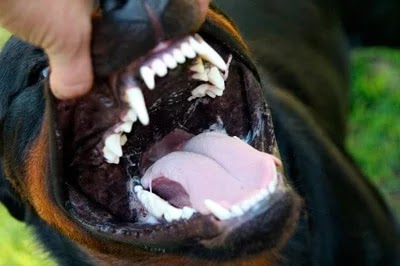Know what kind of bones are safe for dogs: Surely you have heard a thousand stories about how bones for dogs are bad because they can splinter and damage your dog’s digestive system or even obstruct it since they are not digested properly.
What Kind of Bones Are Safe for Dogs?
Raw bones such as chicken, turkey, lamb, beef, or oxtail are safer options for your dog. These raw bones provide essential nutrients like calcium and phosphorus, unlike home-cooked bones, which may lack these benefits.
Actually, all these stories are just that, urban legends without a scientific basis and totally wrong.

Bones are not only not harmful to a dog, but they are highly healthy, nutritious, and help prevent oral diseases as common as tartar. If you spend the next two minutes of your life reading this article, you will learn all about healthy bones for your dog.
Can a Dog Eat Bones?
Of course, a dog can eat bones, his jaw, his teeth, and absolutely his entire digestive system are adapted and prepared to eat meat and bones. Let’s not forget that dogs are carnivorous.
Obviously, if our dog has a digestive disease that defines its diet, we must consult our veterinarian nutritionist. Any healthy dog can eat bones completely naturally.
The only rule we must follow is never to cook bones, never. Cooked bones are very dangerous for a dog because they have lost some of their moisture and become harder and more complex to digest for a dog.
All the bones that we feed our dog must be totally raw. If we are worried about bacteria or parasites, we can freeze them previously for three days. But before giving them to our dog, we will let them thaw and stay at room temperature.
Dogs can eat whole or crushed bones, in case we are afraid to give them whole. Although there really is no reason to worry.
Why is It Said That It is Dangerous to Give Bones to a Dog?
There are several factors that influence all those urban legends that tell lies about the bones for dogs. One of them is the lack of knowledge about people who have dogs, although the main factor is the dog food industry, which obviously rejects the use of natural dog food.

Actually, you don’t have to think about it very much, the companies that sell I think for dogs what they want is to sell more and more, to obtain great benefits.
This is achieved by confusing and cheating consumers, indicating that feed is a complete and natural food? For a dog while being afraid of the dangers of giving fresh food to a dog. What madness !!
The big advertising campaigns of the companies of industrial feeding for dogs (I think), not only confuse people but create false myths and legends about what really is a healthy and natural food for a dog, meat and bones.
There are even veterinarians who do not recommend giving bones or meat to a dog. Some of them due to ignorance, since they are not nutritionists. Others for economic interests, since selling feed for dogs they earn a commission.
And others because they simply have their heads washed, something that is not surprising when we see how canine food companies directly influence universities. Although it seems incredible, it is.
What Bones Are the Most Recommended for Feeding a Dog?
The first thing to keep in mind is that bones can be dangerous, although not how you think. A dog can eat bones all his life and have no problem or eat bones a week and have a problem with them.
In the same way that you or I can eat any food without any problem or one day unexpectedly choking on something.
With this, we want to expose that there is nothing one hundred percent sure, not even the dog food. But that does not mean that the bones are not very healthy and healthy for our dog. The easiest bones to eat for a dog are:
- Chicken bones
- Rabbit bones
Chicken bones are very easy for a dog to digest, just like rabbit bones. We can give our dog chicken carcasses, chicken wings, necks, carcasses or rabbit feet, etc. Always without cooking. If the wings, paras, or shells bring a little of the meat, better yet. More tasty, healthy, and recommended for our dog.
Other bones such as pork ribs can also serve, although having the possibility of using chicken bones and knowing that they are easy to digest for them. Why complicate?
How and When Do I Give Bones to My Dog?
You must take into account the size and weight factor of your dog, a mini-sized dog, needs much less quantity than a large dog. To a dog of mini size, we will try to give him smaller and more tender bones, such as, for example, the tip of the chicken wings to start, little by little we can give him the complete wing.
In medium and large dogs, there is no problem in giving the whole chicken wings, carcasses, etc. Remember, never cooked. Medium and large dogs can chew and digest any part of the chicken or rabbit without a problem.
It is advisable not to mix bones or fresh meat with commercial feed, so if you feed your dog with dog food, do not mix it when using bones. You can feed it with feed in the morning and with bones and meat in the afternoon, for example, or simply use a portion of completely natural dog food.
A natural diet based on fresh foods includes fleshy bones three or four times a week. So it is advisable not to exceed those values, that is, give our dog maximum bones three or four days a week.
The bones do not complete the feeding of a dog; they must be complemented with other fresh products or failing commercial feed.
What Problems Can Cause Bone Consumption?
None, in reality, they are all benefits since it is part of our dog’s natural diet. Using the recommended and always raw bones, the only problems that a dog may have are:
- Constipation, excessive consumption of bones can cause constipation. It is solved by providing more vegetables to the diet and reducing bone consumption.
- Excess calcium can be seen by the color of a dog’s feces and corrected by decreasing the number of bones in the diet.
What Are Recreational Bones?
They are large bones and hardness that are used to entertain the dog, which bites them to break and eat them, but due to their size and hardness, it is unlikely. The femur or calf’s knee are some of the most common recreational bones; also, the pork ham bone is used for these purposes, although this type of bone is easier to break.
